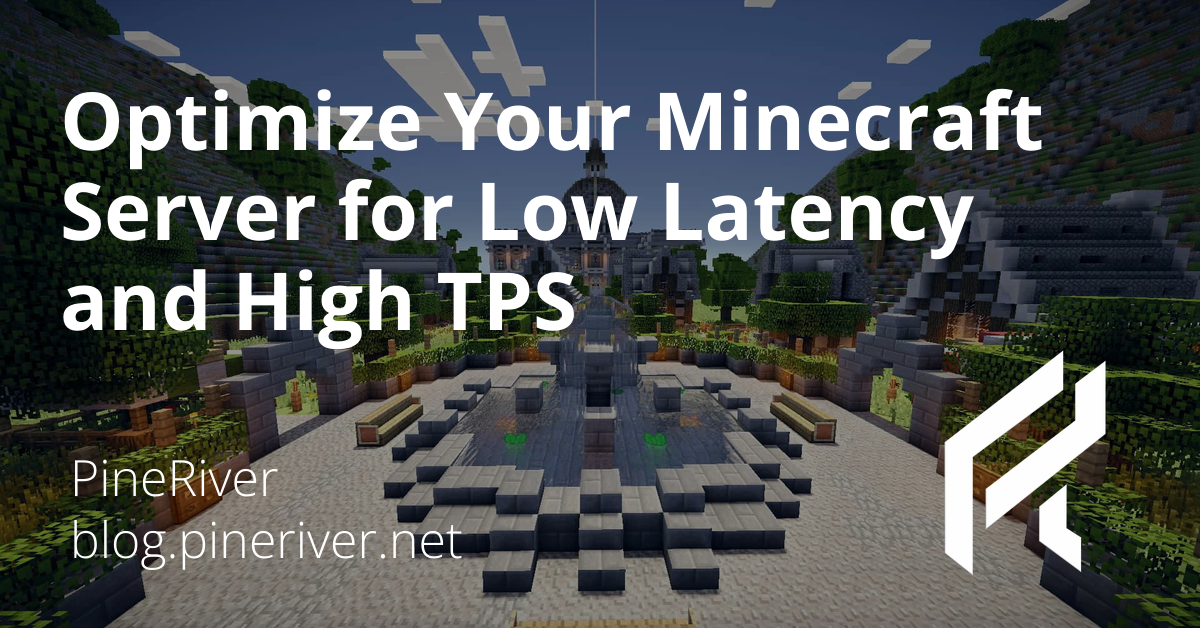Optimize Your Minecraft Server for Low Latency and High FPS

Introduction
If you want to ensure a smooth gaming experience on your Minecraft server, optimizing it for low latency and high TPS (Ticks Per Second) is crucial. A server with low latency ensures faster player response times, while a high TPS (ideally 20.0) means the game runs without lag. In this guide, we will go through the best methods to optimize your server for maximum performance.
1. Understanding Latency and TPS
Before you start optimizing, you need to understand the difference between latency and TPS:
- Latency (ping) is measured in milliseconds (ms) and determines how long it takes for a player to send and receive data from the server.
- TPS refers to how many game ticks the server performs per second (max 20 TPS). Low TPS is often caused by server load rather than network issues.
To check your server’s TPS in-game, use the command:
/tps
or
/luckperms info
2. Choose the Right Hardware and Hosting
Your server's performance primarily depends on hardware. Make sure to choose a powerful hosting provider with:
- High-frequency CPUs (Ryzen 9, Intel i9, or better)
- SSD or NVMe storage for faster file access
- High bandwidth and low latency
- Dedicated cores for large servers
At PineRiver, we offer powerful servers optimized for Minecraft.
3. Adjust server.properties for Optimal Performance
Your server.properties file contains important settings that can reduce lag.
Recommended Settings:
view-distance=6
simulation-distance=4
max-tick-time=-1
use-native-transport=true
sync-chunk-writes=false
- Reduce
view-distanceandsimulation-distance– Lowers the number of rendered chunks and CPU load. - Set
max-tick-timeto-1– Prevents automatic server shutdown due to lag. - Enable
use-native-transport– Improves network communication on Linux. - Set
sync-chunk-writestofalse– Enhances disk speed by saving chunks asynchronously.
4. Use Optimized Server Software
Vanilla Minecraft servers are not optimized for performance. Instead, use optimized server software:
- PaperMC – Faster than Vanilla with better optimization options.
- Purpur – An enhanced version of PaperMC with additional features.
- Fabric + Lithium – If you're using mods, Fabric with Lithium offers better performance.
💡 Tip: Download the latest PaperMC version from papermc.io.
5. Install Performance-Enhancing Plugins
These plugins can help reduce lag and optimize your server:
- ClearLag – Automatically removes unwanted entities.
- Spark – Monitors performance and identifies lag sources.
- FarmLimiter – Reduces entities that cause lag.
- Villager Optimiser – Optimizes villagers for lower CPU usage.
6. Configure spigot.yml and paper.yml
For further optimization, adjust these files.
Key Changes in spigot.yml
entity-activation-range:
animals: 16
monsters: 24
raiders: 48
misc: 8
- Reduces the range at which entities can interact, saving CPU power.
entity-tracking-range:
players: 48
animals: 32
monsters: 32
misc: 16
- Limits how far players can see entities.
Key Changes in paper.yml
max-entity-collisions: 2
armor-stands-tick: false
prevent-moving-into-unloaded-chunks: true
- Reduces lag by minimizing unnecessary entity handling.
7. Optimize Server RAM Usage
To ensure stable performance, allocate the correct amount of RAM. Use a startup command like this:
java -Xms4G -Xmx8G -jar paper.jar nogui
💡 Recommendations:
- 4 GB RAM – Small servers (1-10 players)
- 8 GB RAM – Medium servers (10-30 players)
- 12+ GB RAM – Large servers (30+ players)
Avoid assigning too much RAM, as it can lead to inefficient garbage collection.
8. Automate Server Maintenance
Regular restarts and backups help keep the server stable.
Automatic Restart
Use a cron job to restart the server daily:
0 4 * * * /home/minecraft/restart.sh
Automatic Backups
Use a script like this:
#!/bin/bash
tar -czf /home/minecraft/backups/mc_backup_$(date +%F).tar.gz /home/minecraft/server/
Schedule it with cron to run every night.
Conclusion
By implementing these optimizations, you can reduce lag and ensure a stable server with low latency and high TPS. Use optimized server settings, install relevant plugins, and choose the right hosting for the best experience.
🚀 Ready for a powerful, optimized Minecraft server? Check out PineRiver’s hosting solutions and enjoy a smooth experience today!

